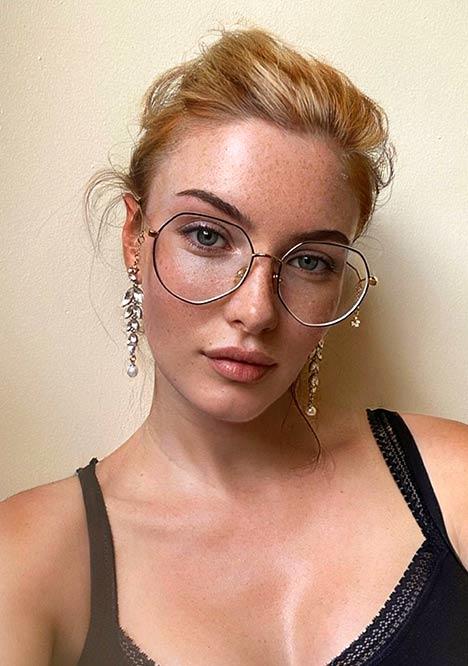All types of prescription lenses explained
You could be one of the over two billion people with distance or near vision impairment. If so, your eye doctor must have advised you to get prescription lenses for better vision. Generally, eye conditions are not the same for every person; hence your prescription lenses will vary.
Read this article to learn more about prescription lenses and the factors to consider before buying them.

What are prescription lenses?
Prescription lenses can be used on eyeglasses or contacts. They both have one goal, which is to correct one's vision. Furthermore, these lenses are designed to alter the light ray's direction so that they will shine correctly in the retina, making your vision clearer.
There are common eye conditions where prescription lenses are necessary. These include the following:
1. Blurred vision. This may involve farsightedness, nearsightedness, and astigmatism. These three eye conditions involve different prescription lenses.
2. Difficulty seeing at night. Some people might also experience not seeing objects at night. You may have early signs of cataracts which must be checked as soon as possible.
3. Difficulty in transitioning from dark to light and vice versa. There might be issues with your eye muscles if you're having difficulty adjusting after seeing brighter lights.
4. Headaches. Eye strain can also cause headaches. If you're experiencing this condition, prescription glasses might help.
All types of prescription lenses
Advancements in technology also paved the way for innovations in prescription lenses. Gone are the days when they were only made of glass. Today, most prescription lenses are made of high-tech plastics. They're lighter, do not easily break, and can have filters to protect the eyes from UV rays. They include the following:
These are the common lenses prescribed by your optometrist. They help patients see one distance. You can try these lenses if you need help reading or seeing objects near or at a distance.
These lenses allow you to see multiple distances without swapping from one eyeglass to another. If you need help seeing most of the time, progressive lenses may be prescribed by your eye doctor.
3. Bifocal lenses.
You'll have better vision up close and at a distance when you wear these lenses.
These lenses allow people with strong prescriptions to have better vision without bulky eyeglasses. You can have thinner and lighter lenses without sacrificing the quality of your vision.
Are custom prescription lenses worth it?
Customized prescription lenses are worth paying for, as they provide enough customization options. The most common features you can include in your lenses include tint, anti-scratch, and anti-reflective coatings. Some patients also opt for high-end lenses like progressives or bifocals if they have difficulty seeing multiple distances. Generally, the cost of prescription lenses will depend on one's condition. The more complex your eye condition will be, the higher the possibility of having your lenses customized.
How to replace prescription lenses?
You must see an optician or the eye doctor who gave the prescription to replace your lenses. In most cases, they must update your eye prescription before replacing the lenses. Eye doctors will perform an eye check and assess your eye condition. With this, they can either stick with the prescription or change them as they create a new set of lenses for your eyeglasses. Also, bring your lens prescription when going for a lens replacement, especially if you want it done by another optometrist or eye doctor.
How to buy prescription lenses?
The eye condition must be the first thing one must consider when buying prescription lenses. By knowing so, you'll have an idea of what type of lens to get. As you already know, those having issues seeing multiple distances can opt for more expensive lenses like the bifocals and progressives. This leads you to evaluate the cost of getting these lenses.
Once the above factors are settled, you can decide which frame style to use. Of course, thinner lenses can opt for those thin metallic frames. If you have thicker lenses, ensure you'll get a frame that can properly hold them. Most importantly, the frames must be durable to withstand possible bumps and falls, especially if you regularly use the lens.
Best glasses frames for prescription lenses
1. Sarah

Picture yourself striding confidently through the bustling city streets—Lensmart's Sarah Square Tortoiseshell Glasses are the perfect finishing touch to your look. From commanding the boardroom to enjoying a relaxed brunch, these frames seamlessly blend timeless elegance with contemporary sophistication.
2. Andrea

Picture yourself strolling through a sunlit café or catching up on your favorite book by the window—Lensmart's Andrea tortoiseshell round glasses are your perfect companion. With their timeless design and lightweight comfort, these frames effortlessly blend vintage charm with modern sophistication, making every moment stylish and memorable.
3. Frode

Picture yourself stepping into a sophisticated art gallery, where every glance reflects the perfect blend of style—Lensmart's Frode Square Tortoiseshell Glasses with metal detailing elevate your look with timeless elegance. With their seamless fusion of classic charm and modern flair, they add a refined edge to your everyday style.
Related articles:
Ultimate guide: how to read eye prescription
Prescription sports glasses explained
Prescription safety glasses explained
Buying the best prescription goggles for adults & kids
Is it worth buying prescription sunglasses?
What affect the thickness of glasses lenses?
Single-vision lenses vs. multifocal lenses: what should you choose?
Trifocal lenses' advantages and disadvantages explained
Trivex lenses answered: problems, differences, and more
Polycarbonate lenses explained: pros, cons and more
Guide to buying the right fake glasses (non-prescription glasses)




















